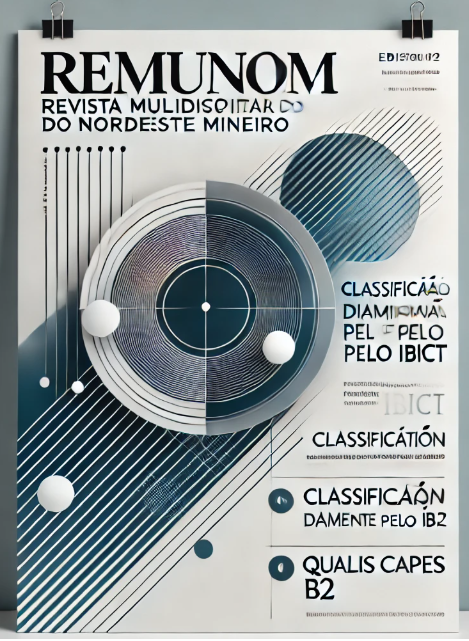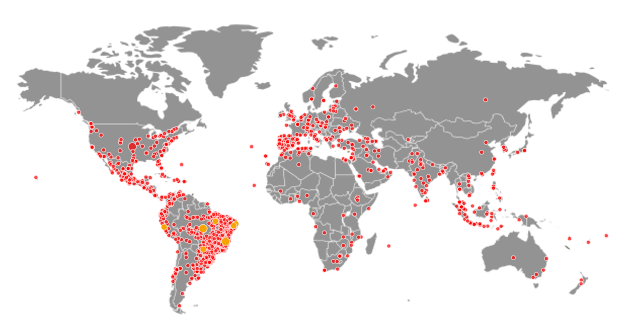The LEARNER WITH AUTISM: MULTIPLE INTELLIGENCES AND MOBILE APPLICATIONS
DOI:
https://doi.org/10.61164/rmnm.v7i1.3716Keywords:
Multiple intelligences, Mobile applications, Autism Spectrum Disorder (ASD), UsabilityAbstract
This article is the result of research carried out in the Specialization Course in Autism Spectrum Disorder in the Field of Digital Technologies (TDICS), offered by the Federal University of Tocantins - UFT. Considering that digital resources provide and encourage different learning profiles by presenting the same content in different forms, such as audio, video and readings, research is carried out on multiple intelligences and mobile applications: connections and possibilities for learners with autism, in order to identify free and open mobile applications and the stimulation of the multiple intelligences of learners with autism. To this end, it is necessary to understand how these mobile applications stimulate multiple intelligences from the perspective of learners with autism, and to map the free and open applications found and the intelligence they stimulate and their suitability for learners with autism. A hypothetical deductive study is then carried out, with a qualitative and exploratory approach through bibliographic research and content analysis. In view of this, it is clear that technology present in everyday life should be seen as an ally, it is there to make life easier for learners with autism, helping them with their tasks and difficulties. Everyone learns, a child with autism may not be able to verbalize, but with the help of assistive technology they will be able to do so and develop their mental schemes, their intelligence, which leads to the realization that there are many free applications for learners with autism available in online stores and it is possible to find more than one software with the same function.
References
ANTUNES, C. Jogos para a estimulação das múltiplas inteligências. 12a. edição. Petrópolis, RJ: Vozes, 2003.
ANTUNES, Celso. As inteligências múltiplas e seus estímulos. São Paulo. Papiros, 14ª ed.2008.
CARVALHO F; CARDOSO, B. D; MORAES, I; NASCIMENTO, F-L; SILVA, M. V; PEREIRA, M; BEZERRA, M. L; SANTOS, O; SOUSA, T. O uso de aplicativos digitais no processo ensino-aprendizagem de crianças no espectro do autismo: uma revisão integrativa. Revista Enfermagem Atual In Derme, v. 91, n. 29, 6 abr. 2020.
FUNDAÇÃO SOFTWARE LIVRE AMÉRICA LATINA – FSF. Disponível em: www.fsfla.org/ikiwiki/about/what-is-free-software.pt.html. Acesso: 04 nov. 2021.
FREEWARE. In: DICIO, Dicionário. O dicionário de informática. Tech Lib: Sharpened Productions, 2021. Disponível em: <http://www.TechLib.com/definition/[term] >. Acesso em: 04 nov.2021.
GADIA, Carlos; ROTTA, Newra Tellechea. Aspectos Clínicos do Transtorno do Espectro Autista. In: ROTTA, N.T;OHLWEILER, L; RIESGO, R. Transtornos de Aprendizagem: abordagem neurobiológica e Multidisciplinar (Org). Porto Alegre: Artmed, 2016.p.368- 376.
IBGE – INSTITUTO BRASILEIRO DE GEOGRAFIA E ESTATÍSTICA. Estatísticas Sociais: Internet chega a domicílios do país. Brasília (DF): 2019. Disponível em: https://agenciadenoticias.ibge.gov.br/agenciasala-de-imprensa/2013-agencia-de noticias/releases/30521-pnad-continua-tic-2019-internet-chega-a-82-7-dos-domicilios-do-pais. Acesso: 13 nov. 2021.
JUNG, Carl Gustav. Memórias, sonhos e reflexões. Rio de Janeiro: Nova Fronteira, 1975.
Manual diagnóstico e estatístico de transtornos mentais [recurso eletrônico]: DSM-5 / [American Psychiatric Association; Tradução: Maria Inês Corrêa Nascimento [et al.]; revisão técnica: Aristides Volpato Cordioli ... [et al.]. – 5. ed. – Dados eletrônicos. – Porto Alegre: Artmed, 2014.
MARINHO, Simão Pedro et al. Tecnologias móveis, mídias e redes sociais: cultura de uso de estudantes de licenciatura. Anais dos Workshops do Congresso Brasileiro de Informática na Educação, [S.l.], p. 834, out. 2015. ISSN 2316-8889. Disponível em: <https://www.br-ie.org/pub/index.php/wcbie/article/view/6127>. Acesso em: 02 nov. 2021. doi:http://dx.doi.org/10.5753/cbie.wcbie.2015.834.
POSAR, Annio; VISCONTI, Paola. Sensory abnormalities in children with autism spectrum disorder. Pediatr (Rio J). 2018;94:342-50. Disponível em:<https://doi.org/10.1016/j.jped.2017.08.008https://doi.org/10.1016/j.jpedp.2017.11.009>. ISSN 1678-4782> Acesso: 01 nov 2021.
REIS, Marlene Barbosa de Freitas; DE SOUZA, Carla Salomé Margarida; DOS SANTOS, Lilian Cristina. Tecnologia assistiva em dispositivos móveis: aplicativos baseados no TEACCH como auxílio no processo de alfabetização com crianças autistas. EccoS–Revista Científica, n. 55, p. 10652, 2020.
ROCHA, F. S.; SANTANA, E. B.; SILVA, E. S.; CARVALHO, J. S. M.; CARVALHO, F. L. Q. Uso de apps para a promoção dos cuidados à saúde. In: SEMINÁRIO DE TECNOLOGIAS APLICADAS EM EDUCAÇÃO E SAÚDE, 3. 2017, Bahia. Anais eletrônicos [...]. [Salvador?]: UNEB, 2017. Disponível em: https://www.revistas.uneb.br/index.php/staes/article/download/3832/2382. Acesso em: 03 nov 2021.
ROGERS, Yvonne; PREECE, Jenny; SHARP, Helen. Design de Interação: Além da Interação Humano-Computador. Bookman: 3ª ed., Porto Alegre, 2013.
WHITMAN, T. O desenvolvimento do autismo: social, cognitivo, sensório-motor e perspectivas biológicas. São Paulo: M. Books, 2015.
WEBGRAFIA
Google play LetMe Talk. Disponível em: https://play.google.com/store Acesso em nov. 2021.
Centro Aragonês de Comunicação Aumentativa e Alternativa. Disponível em: https://arasaac.org/ para mais informações. Acesso em nov. 2021.
BERSCH, R. Tecnologia Assistiva e Educação. 2017. Disponível em: https://www.assistiva.com.br/Introducao_Tecnologia_Assistiva.pdf Acesso em nov. 2021.
TED. Temple Grandin: O mundo necessita de todos os tipos de mentes. YouTube. Disponível em: https://youtu.be/fn_9f5x0f1Q. Acesso em nov. 2021.
VYSHEDSKIY, A.; Khokhlovich, E.; Dunn, R.; Faisman, A.; Elgart, J.; Lokshina, L.; Gankin, Y.; Ostrovsky, S.; deTorres, L.; Edelson, S.M.; Ilyinskii, P.O. Novel Prefrontal Synthesis Intervention Improves Language in Children with Autism. Healthcare. 2020 Disponível em: https://www.mdpi.com/2227-9032/8/4/566. Acesso em nov. 2021.
Downloads
Published
How to Cite
Issue
Section
License
Copyright (c) 2025 Revista Multidisciplinar do Nordeste Mineiro

This work is licensed under a Creative Commons Attribution-NonCommercial-ShareAlike 4.0 International License.




